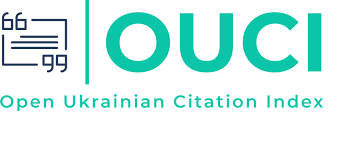ОСОБЛИВОСТІ СТРУКТУРУВАННЯ РЕКЛАМНИХ ПОВІДОМЛЕНЬ У СУЧАСНОМУ АНГЛОМОВНОМУ ТУРИСТИЧНОМУ ДИСКУРСІ
DOI:
https://doi.org/10.31861/gph2021.833.54-61Ключові слова:
сучасний англомовний туристичний рекламний дискурс, кореляція, вербальний компонент, невербальний компонент, візуальний компонентАнотація
Туристична галузь сьогодні виступає одним з напрямів розвитку як економіки, так і культури країни. Туризм не лише відкриває кордони, дає можливість познайомитись з культурними надбаннями народу, розширити власні «інтелектуальні потужності», але й є сферою, в якій широко – підсвідомо й усвідомлено задіюють різні сугестивні засоби впливу на реципієнтів. Популяризація туристичного об’єкту здійснюється через рекламу, тому тексти рекламного характеру у туристичному рекламному дискурсі, під яким ми розуміємо інституційний вид дискурсу, зосереджений на орієнтуванні у множині туристичних об'єктів та на ресипрокальному зв’язку з адресатами, виступають одним з ключових засобів промоції туристичної продукції.
Мета статті полягає у представленні базової структури тексту сучасної англомовної туристичної реклами та визначенні кореляції її вербальних та невербальних компонентів, об’єктом дослідження обрані рекламні повідомлення у туристичній сфері, а предметом – вербальні та невербальні засоби відтворення туристично релевантного змісту. Реалізація мети вимагає виконання низки завдань, спрямованих на аналіз кореляції вербальних та невербальних компонентів та представлення базового каркасу текстів сучасного англомовного туристичного рекламного дискурсу.
За результатами дослідження встановлено, що специфіка рекламних текстів у сучасному англомовному туристичному рекламному дискурсі полягає в особливості поєднання інформаційних, лінгвістичних, соціокультурних гендерних та психологічних компонентів, за допомогою якої створюється та закріплюється у свідомості реципієнтів позитивно-маркована модель рекламованого туристичного об’єкту. Інформація у текстах є фрагментованою, що дозволяє уникнути перенасичення «відомими» фактами та лише частково презентувати туристичні «цікавинки». Базова структура реклами туристичного об’єкту така: візуальний компонент (архі-фрагмент), як засіб привернення уваги реципієнта, вербальний компонент: заголовок (мід-фрагмент), як засіб зацікавленості, текст реклами (термінальний-фрагмент), як основний засіб сугестії.







